- youtube
- bluesky
- Home
- About
- Costume Journal
- Membership
- Conference & Events
- Grants & Awards
- News & Social
In this week's blog, Ambassador Caitlin Allen tells us about the Fields of EveryWhen project, which she had the pleasure of experiencing first hand on one of their hot air balloon launches at the beginning of Autumn. Drawing on the stories of Thamesmead residents the balloon, including works by RSN students, acts as both a sculpture to embody these experiences and a vehicle from which to view the community it represents.
Storytelling through needlework has long been ingrained in English heritage, with surviving examples dating back to the 10th century. Opus Anglicanum is the medieval practice of using embroidery to adorn a textile. In the height of its popularity, English embroidery was one of the most highly regarded art forms in Europe. Whether for religious or secular purposes, these spectacularly embroidered items were a luxury in centuries past. Since these textiles were predominantly commissioned by wealthy patrons, the stories depicted things such as glorified battles, liturgical events and royal lineage. While surviving examples of Opus Anglicanum are numbered, a few exemplary pieces still reside within collections in the UK. Notably, the Butler-Bowden Cope, which depicts the life story of the Virgin Mary and dates from 1330-1350. It can be seen on display at the Victoria & Albert museum in London.
Perhaps the most recognizable example of using embroidery as a storytelling mechanism is the Bayeux Tapestry. With its impressive scale (70 meters long), it details the events surrounding the 1066 conquest of England by the Duke of Normandy. In the same way that the Bayeux Tapestry offers a pictorial account of the time, so too does Fields of EveryWhen, the newest project from M+R studios. Artists Neil Musson and Jono Retallick have developed a wholly unique artwork with the aim: “to create an abstract map of a social landscape”. This latest project, which has been in the works for over two years, has culminated in the form of a hot air balloon in which the balloon itself is decorated with the embroidered stories of Thamesmead residents. A hot air balloon may seem like an obscure way to display works of needlework, but the method works surprisingly well. The team of M+R explained that hot air balloons were, “the first method used to look back down at, and photograph, the Thamesmead landscape. Thamesmead was also heavily protected by barrage balloons during the war due to its proximity to the Royal Arsenal.” With this in mind, the decision to utilise a balloon as the canvas makes perfect sense.
Next, Musson and Retallick needed to bring the surface to life and to do this, the artist put a call out to the community. Anyone with ties to Thamesmead was invited to participate in one of two ways, by sharing a story or responding to one through art. Countless members of the community joined in to share their tales. M+R made it clear that they wanted to hear stories of all sorts, from the most special moments down to the seemingly mundane; all tales about Thamesmead were welcome. The collection of stories was shared online and the community was invited to respond by interpreting them into works of art. The idea was that the spoken words would quite literally be woven into a piece of art and then linked together on the canvas of the balloon to create a one-of-a-kind pictorial representation of Thamesmead and its residents.
Artists of all skill levels partook in creating responses. Each work of art is as varied as the stories they represent. The final result is a collage of epic proportions which could be seen for miles around when on one of its numerous launches that were undertaken in August and September; 200 designs collaged together made up the impressive 800 metres of fabric that formed the balloon.
As part of the project, M+R collaborated with students form the Royal School of Needlework (RSN), who interpreted the stories submitted by Thamesmead residents into embroidery. With the contributing students using different stories, designs, and embroidery techniques, Neil Musson noted that ‘the wide variety of approaches and creative styles’ across the cohort ‘really enhance[d] the sculptural hot air balloon’, celebrating and commemorating the breadth of experiences lived by the Thamesmead residents. The result of this is a floating gallery, demonstrating both Thamesmead itself by viewing its landscape from above, but also the stories and creativity of its community; the experience of flying in the balloon represents an incredible innovation in regard to using and displaying embroidery. Not only this, but the ever-persistent strength in quality of the work of the RSN’s students, and the School’s immersion in new and exciting embroidery uses and projects alongside its historic roots.
The Fields of EveryWhen balloon is expected to take flight again in 2023 for those who missed it in Autumn, but in the meantime you can take a virtual flight to explore Thamesmead's stories through the eyes of the floating gallery.
To read more about another of the RSN’s ongoing projects, visit our previous blog post on the RSN Stitch Bank.
Image gallery
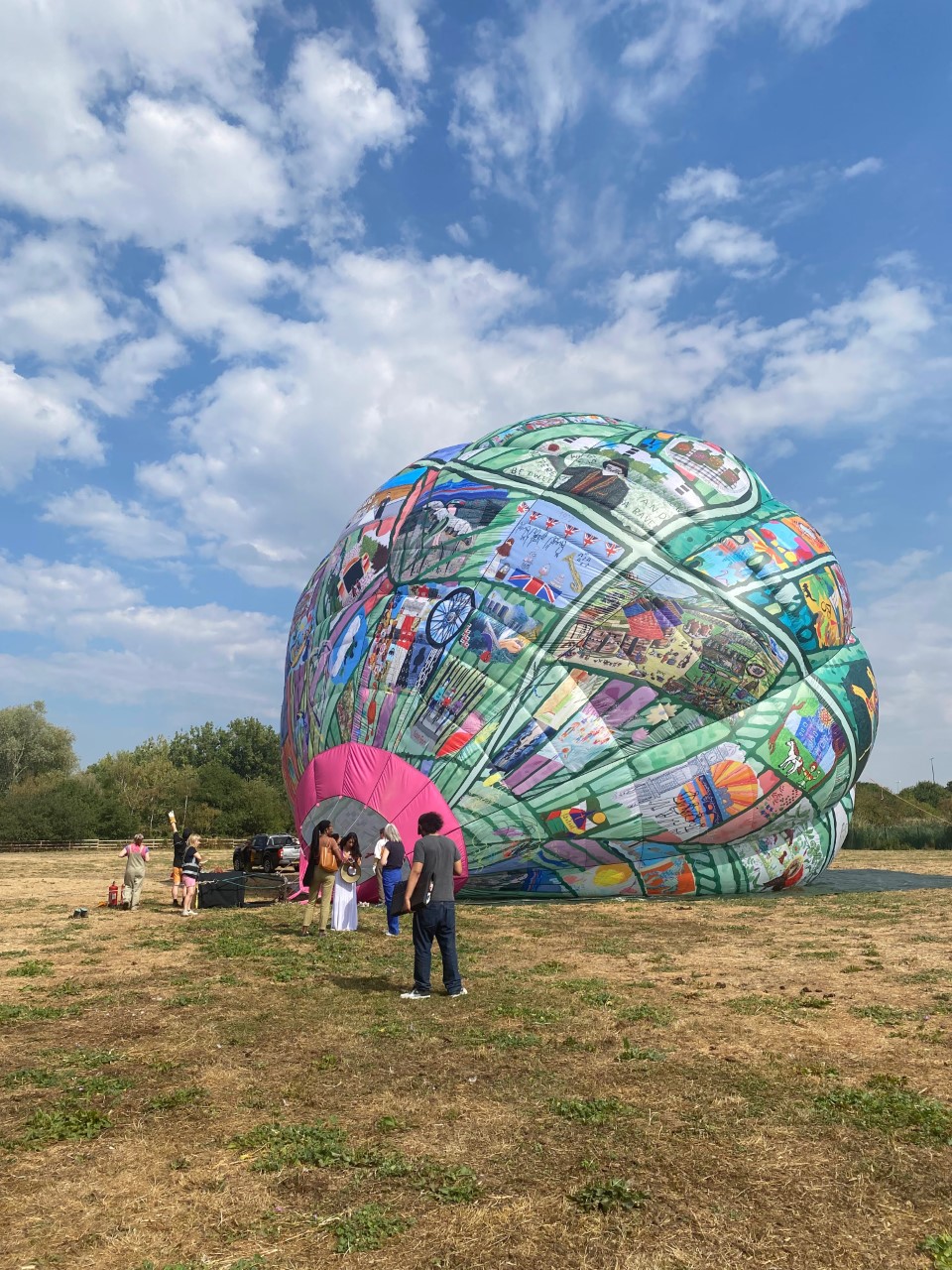
The Fields of Everywhen balloon preparing for launch. With permission of Caitlin Allen.
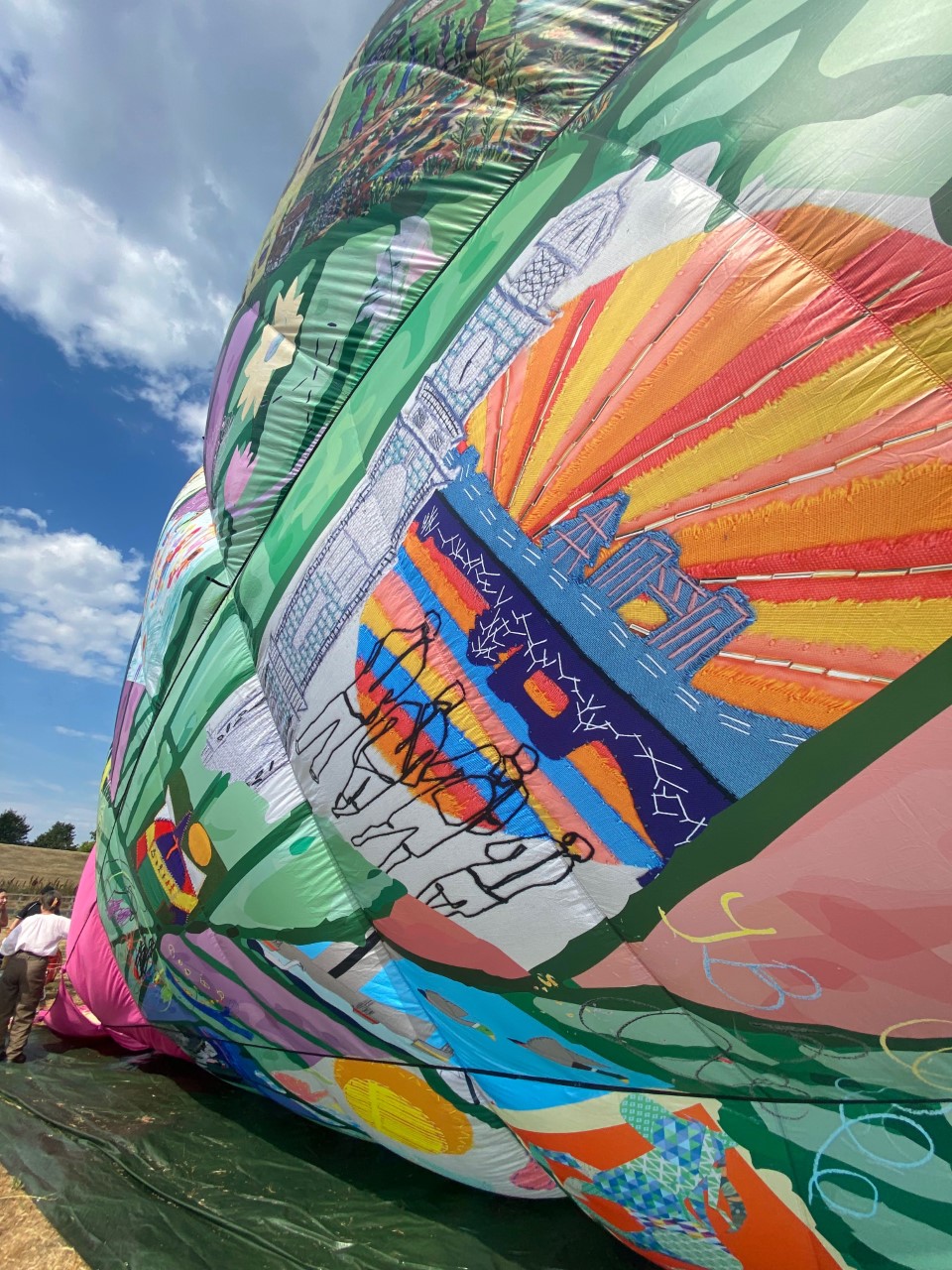
Some of the 200 collaged works that make up the balloon. With permission of Caitlin Allen.
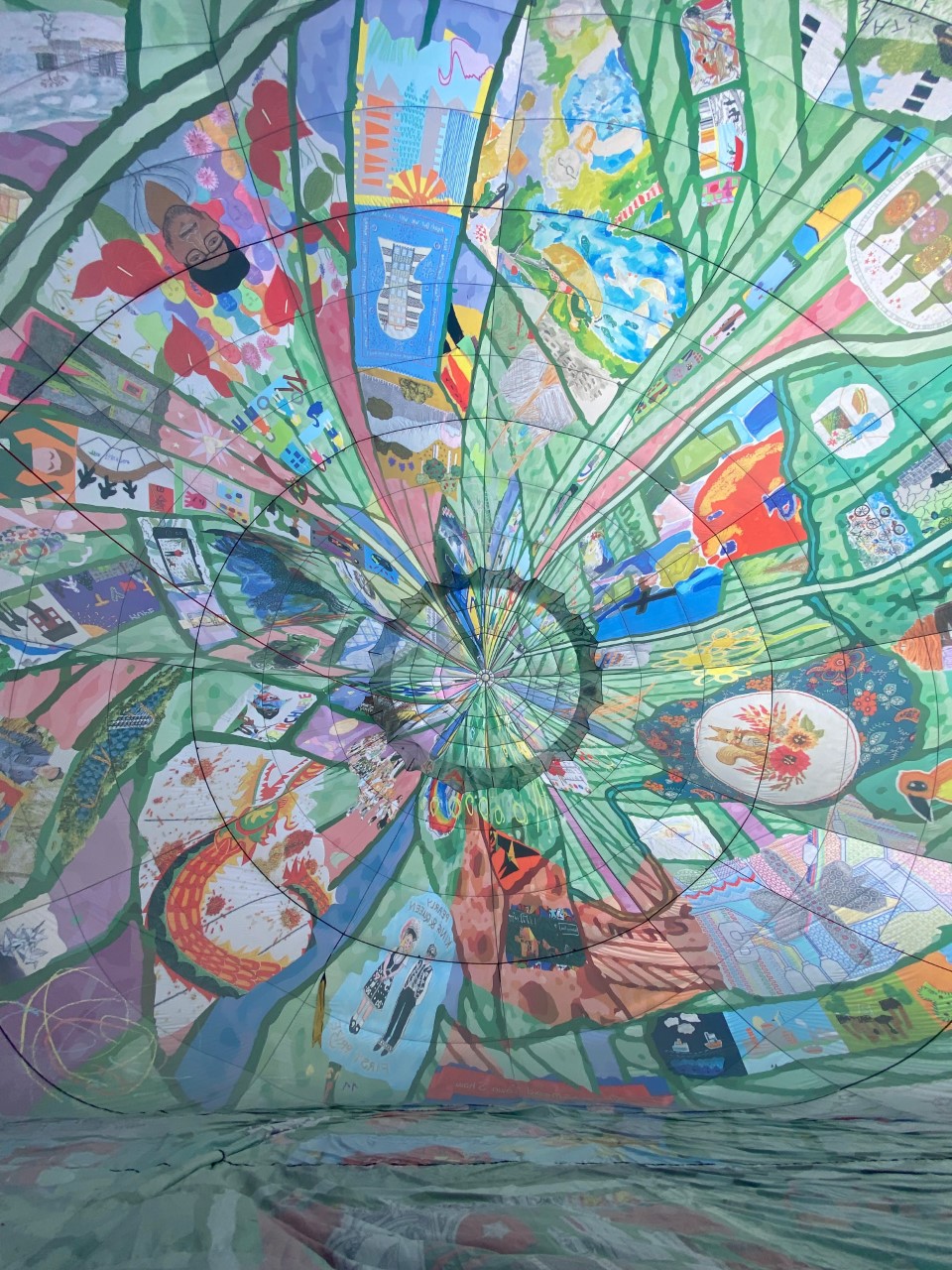
A view inside the 'floating gallery'. With permission of Caitlin Allen.
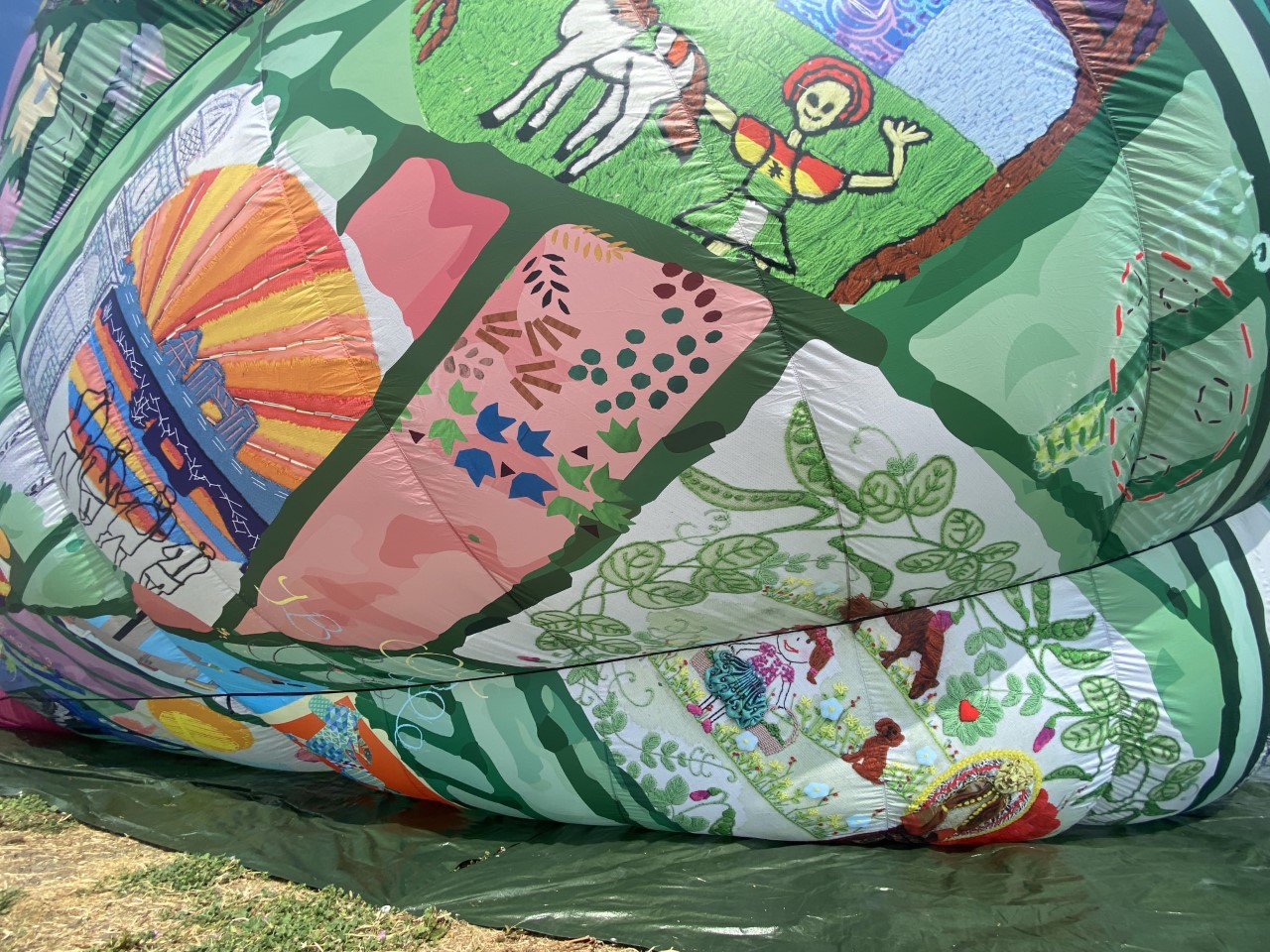
Some of the 200 collaged works that make up the balloon. With permission of Caitlin Allen.

A story of a Thamesmead resident represented in embroidery on the balloon. With permission of Caitlin Allen.
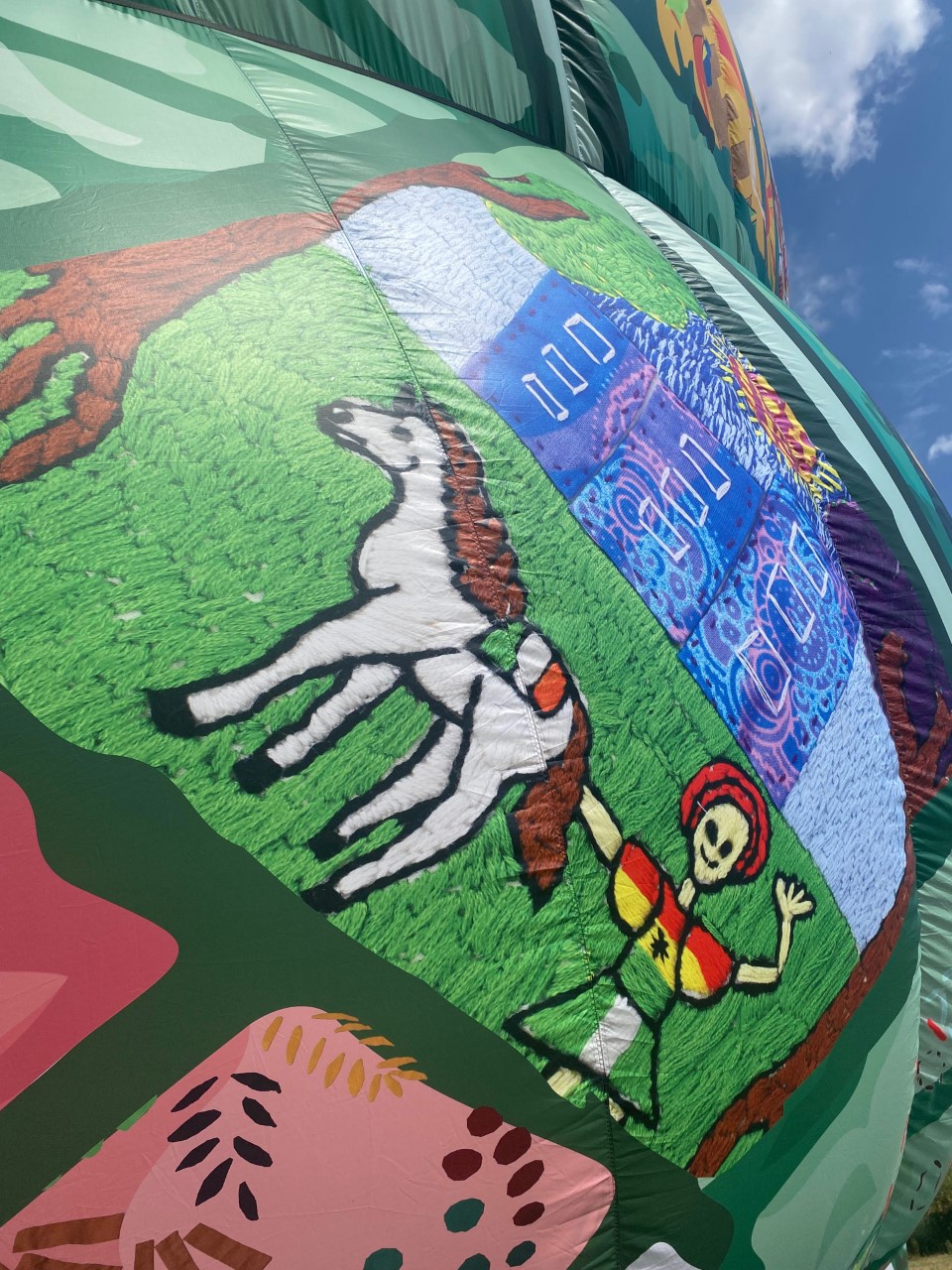
Works collaged onto the balloon fabric. With permission of Caitlin Allen.